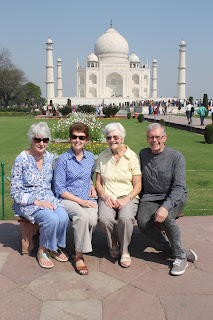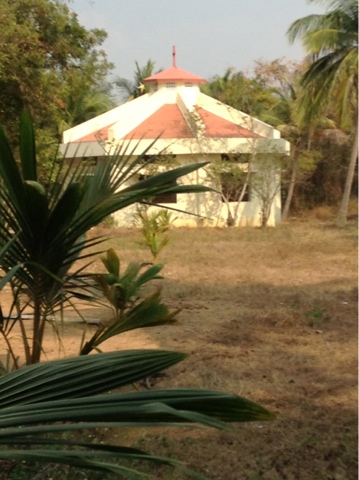...... is a beautiful city; well perhaps it's exaggerating to say that, the main Temple is exquisitely-fine, but we didn't have time to visit it yesterday. We were making our way to the airport, but our driver took a detour through the city for us to glimpse it as we passed.
What WAS amazing was the new road,which took us there from near to Dindigul. The new North -South corridor road from the Kashmir border right down to the Southern tip of India has been (almost) completed. In good Indian fashion, at one minute it's a perfect piece of dual carriageway, and then suddenly you're back to potholes for a stretch. Add into that the Indian style of driving, and, don't get me wrong, Indian drivers are, have to be, the most-skilled drivers in the world, but what they execute with great gladiatorial skill at 20 kph, is a little-more-challenging at 100 kph!
The second amazement was Madurai airport, which now makes Southampton Airport look small and parochial, whereas five years ago it was very much the other way around. What is more, there was a notice, plain for all to see, about NOT paying bribes, and that anyone expecting to receive such should be reported. In the previous tin-shack incarnation of the airport, we were fleeced by an airport official who "took charge" of us, and that included him menacing us for money. We experienced the same in the Temple five years ago, where another official demanded a "handling fee" for sorting-out our photographic passes. By that time my righteous indignation over-rode my "sensible" side; I told him to get lost, and he did!
Today we're being tourists, and we've arranged a trip by car to see the coast and coastal sites; a temple or two, a basilica or two, the old fort we left behind, and the Chennai marina. Should be relaxing, except being driven in Chennai is always akin to sailing down Niagara Falls.
More later, and a much more theological day tomorrow, as we meet students and staff at Gurukul Lutheran Seminary, to find out how they are preparing ordinands to minister in today's India.








































